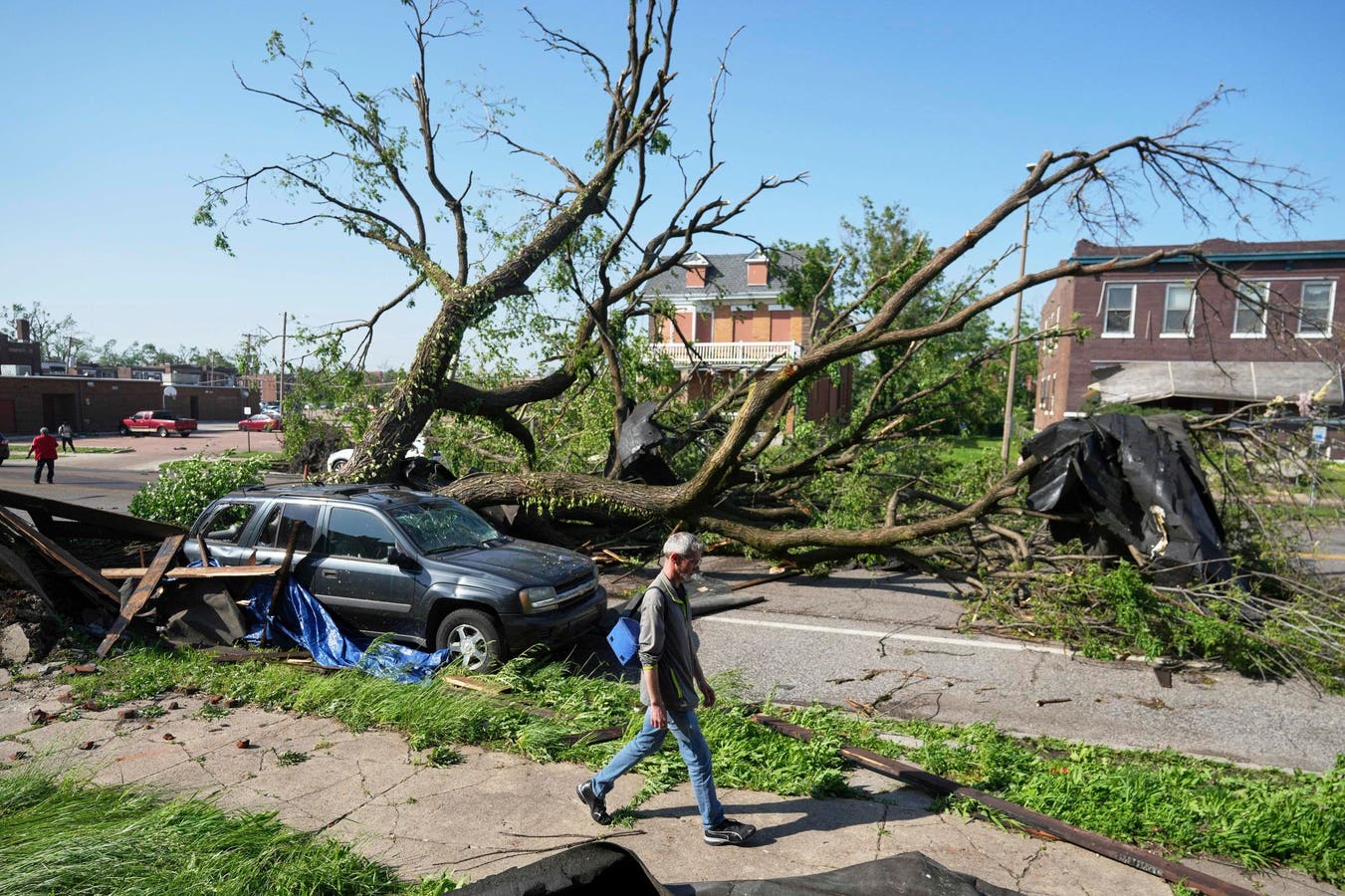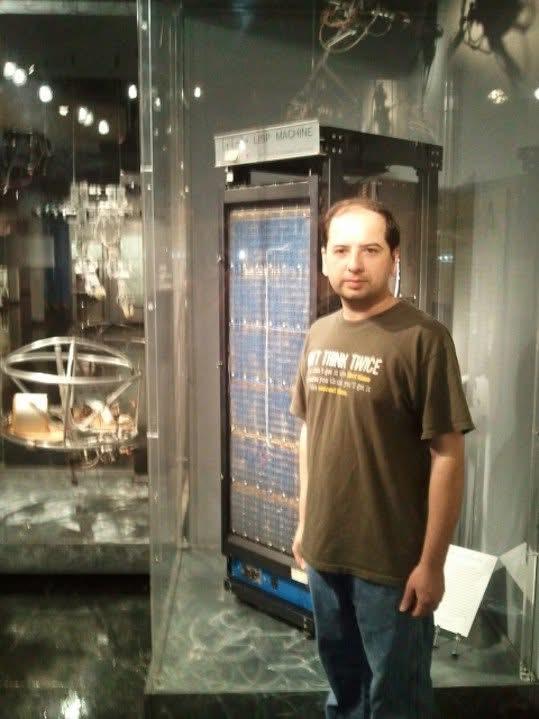A person walks past a large tree blocking a road after a severe storm moved through Friday, May 16, … More
The very active 2025 tornado season continues with deadly consequences. Nearly 30 people have died after tornadoes moved through the central U.S., including St. Louis. The National Weather Service confirmed that at least one EF3 tornado tracked through parts of the St. Louis Metropolitan area on Friday. The tornado stayed on the ground for 8 miles leaving a wake of destruction, fatalities, and power outages. Here’s what we know right about it and how it compares to a historic tornado that ravaged the same city over a century ago.
Local media reports, at the time of writing, indicate at least 5 fatalities and several injuries from tornadic activity that impacted the St. Louis area. As of Sunday morning, tens of thousands of people were still without power, particularly in the northern part of the city.
The initial survey indicates an EF3 tornado path at least 8 miles long and a mile wide in parts of … More
On Saturday evening the NWS office in St. Louis wrote, “Initial surveying of the May 16 St Louis tornado has been completed only for the portion west of the Mississippi River.” They noted that the tornado began at 2:41 p.m. local time near Clayton and tracked for at least 8 miles reaching EF3 intensity with approximately 150 mph wind. Over the course of its time on the ground, the path reached a maximum width of 1 mile. Because the survey has not been completed for areas east of the river, it is almost certain that tornado was on the ground for additional miles into the state of Illinois.
The Enhanced Fujita Scale.
While certainly an interesting story, tornadoes in the St. Louis area are not unprecedented. I often use the Midwest Regional Climate Center Tornado Tracks tool in my mesoscale meteorology class at the University of Georgia. We actually did an exercise with it a few weeks ago. From 1950 to 2024, several tornadoes have tracked near St. Louis. Several of them were at least F/EF3 or long track.
Tornado tracks from 1950 to 2024 in the Midwest.
The Great St. Louis Tornado of 1896 still ranks as the deadliest tornado in St. Louis history. According to a NOAA website, “It would most likely be rated as an EF4 today, with winds estimated between 168 and 199 mph.” Meteorologist and weather historian Sean Potter told me, “Without lifesaving weather radars, models, and warnings, we might as well be back in 1896, when a devastating tornado on May 27 cut a 10-mile path of destruction through the heart of St. Louis, killing 255 people and injuring 1,000 others.” Potter went on to place the storm in perspective. He continued, “The 1869 tornado in St. Louis still ranks today as the third-deadliest in U.S. history (after the Tri-State Tornado of 1925 and the Natchez, Mississippi, tornado of 1840).”
St. Louis from space.
Potter, who wrote a retrospective of 1896 tornado in 2022, makes an important point with many NWS offices currently understaffed, and services being reduced. St. Louis is more densely populated now than in 1896, yet there are only 5 confirmed fatalities so far. Thanks to the National Weather Service, we have advanced Doppler radars, models, satellites, and observing systems. Additionally, the NWS works closely with a robust network of emergency managers or responders and other communication outlets.
Damage from a tornadic storm system in 1896.








